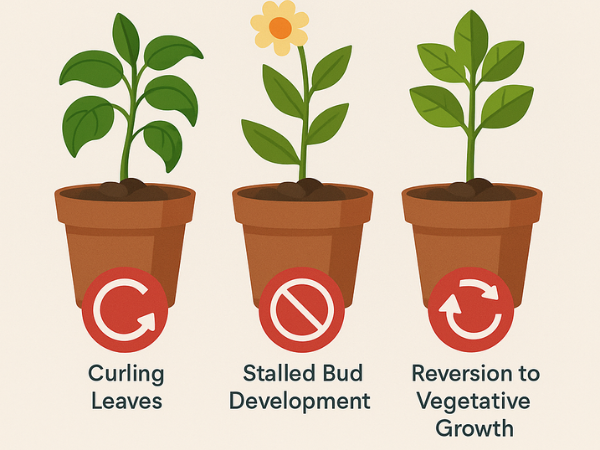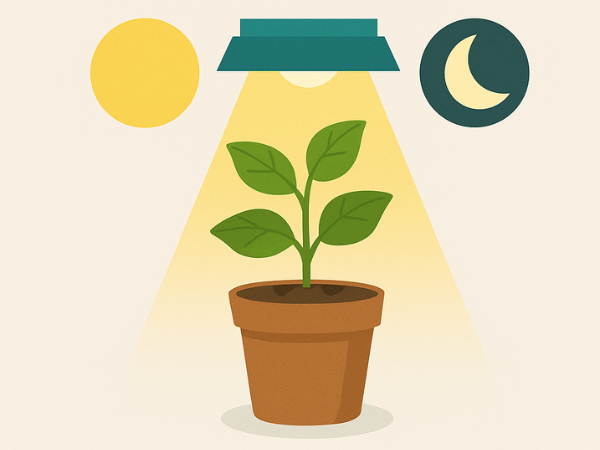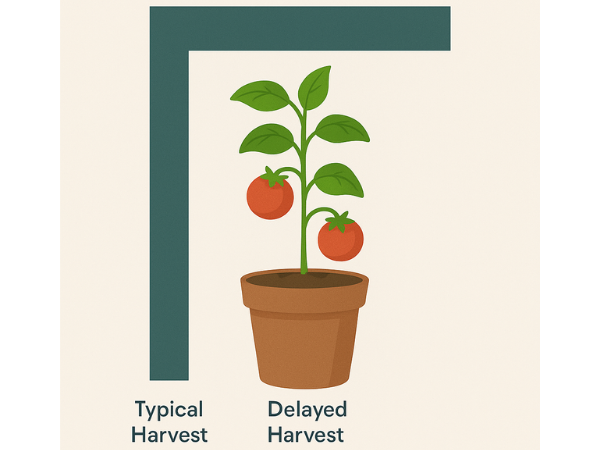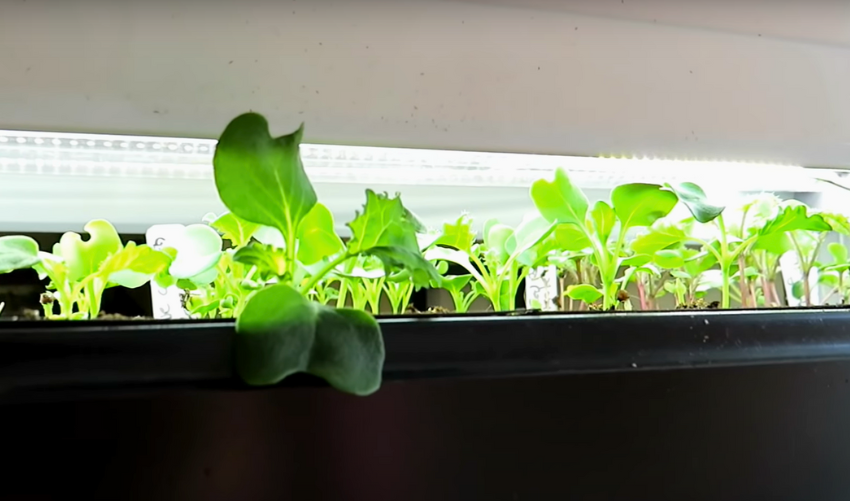If you accidentally left your grow lights on, don’t panic. You can take steps to help your plants recover.
This guide will walk you through the best actions to take. From adjusting light schedules to assessing plant health, you’ll find practical advice to get your plants back on track.
Understanding The Impact Of Excess Light During Flowering
Excess light during the flowering stage can confuse plants. They depend on strict light/dark cycles for healthy growth. When grow lights are left on too long, it disrupts these cycles. This can lead to stress or delayed blooming.
How Light Cycles Affect Flowering Plants
Plants rely on specific light cycles to trigger flowering. These cycles are essential for their growth and development. During the flowering stage, plants need a balance of light and dark. Too much light can disrupt this balance.
- Day Length: Most flowering plants need long days to bloom. However, they also require darkness.
- Light Intensity: Bright light is crucial, but too much can cause problems. Excessive light can lead to stress.
- Timing: Consistent light cycles help plants know when to flower. Disruptions can confuse them.
Below is a simple table showing the effects of light cycles on plants:
| Light Cycle | Effect on Plants |
|---|---|
| 12 hours light / 12 hours dark | Ideal for many flowering plants. |
| 16 hours light / 8 hours dark | Promotes vegetative growth. |
| 24 hours light | Causes stress and possible reversion to vegetative growth. |
Disruptions can lead to stress or delayed blooming. Plants may not produce flowers as expected.
Signs Of Light Stress In Flowering Plants

When plants receive too much light, they show signs of stress. Identifying these signs is crucial for recovery. Common symptoms include:
- Curling Leaves: Leaves may curl or twist under excess light.
- Stalled Bud Development: Buds may stop growing or develop slowly.
- Reversion to Vegetative Growth: Plants may switch back to the vegetative stage.
Other signs can include yellowing leaves or burnt tips. Recognizing these symptoms early is vital. Here’s a quick list to help identify light stress:
- Monitor leaf appearance.
- Check bud growth regularly.
- Observe any changes in plant behavior.
Timely action can prevent further damage. Adjusting light conditions can help plants recover. Ensuring a proper light/dark cycle is essential for healthy flowering.
Immediate Steps To Take If Grow Lights Were Left On
Knowing the immediate steps to take can help save your plants. Here are some actions to take if you accidentally left your grow lights on.
Restore Proper Light Schedule Right Away

Act quickly to restore the light schedule. Plants rely on light and dark cycles for healthy growth. A consistent light schedule is crucial during flowering. Follow these steps:
- Turn off the grow lights immediately.
- Monitor your plants for signs of stress.
- Reestablish the 12/12 cycle (12 hours light / 12 hours dark), without further interruptions.
Adjust the light timing carefully. If you left the lights on for too long, your plants may need a short dark period to reset. Consider a period of total darkness if necessary. This can help mitigate stress.
Keep a close eye on your plants. Watch for signs like:
- Stretching stems
- Yellowing leaves
- Abnormal flower development
Document any changes in your plants’ growth. This helps track recovery and adjust care as needed. Remember, some plants may bounce back quickly, while others may take time.
Use A Timer To Prevent Future Errors
To avoid mistakes in the future, use a timer. Automate your lighting with a reliable timer, to avoid accidental disruptions. Here’s how to set it up:
- Choose a timer suitable for your grow lights.
- Set the timer for the correct lighting schedule.
- Test the timer to ensure it works properly.
Timers can help you stick to the 12/12 cycle. This consistency benefits plant health and flowering. Timers also free you from worrying about manual adjustments.
Consider these features when selecting a timer:
| Feature | Benefit |
|---|---|
| Digital vs. Mechanical | Digital timers are more precise. |
| Multiple Settings | Allows for varied light schedules. |
| Battery Backup | Continues to work during power outages. |
Investing in a good timer can save you from future headaches. Maintaining a regular light schedule keeps your plants happy and healthy.
Assessing And Supporting Plant Recovery
Leaving grow lights on too long can stress plants. This can lead to problems like hermaphroditism. It is important to assess and support plant recovery after such an event.
Monitor For Hermaphroditism Or Stress Symptoms
Inspect plants regularly for male flowers or other stress signs. Stress can cause plants to develop male flowers. This can lead to pollination and seed production, which is not desired during flowering.
- Yellowing leaves
- Leaf drop
- Slow growth
- Male flowers appearing
Use the following table to track any changes in your plants:
| Date | Observations | Action Taken |
|---|---|---|
| Day 1 | Leaves starting to yellow | Checked light schedule |
| Day 2 | Male flowers found | Removed affected plants |
Taking quick action is vital. Keep a close eye on your plants. Early detection of stress can help you make necessary adjustments.
Provide Stable Conditions And Nutrients
Creating stable conditions is crucial for recovery. Keep temperature, humidity, and feeding consistent to reduce further stress. A stable environment helps plants regain their strength. Here are some tips to maintain stability:
- Maintain a temperature range of 68-77°F (20-25°C).
- Keep humidity levels between 40-60%.
- Use a balanced nutrient solution.
Watering is also important. Overwatering can cause root rot, while underwatering can stress plants. Check the soil moisture before watering. Aim for a moist but not soggy environment.
Regular feeding is key. Use nutrients suitable for flowering plants. This supports their recovery and promotes healthy growth.
When To Consider Starting Over
What happens if those lights stay on too long during the flowering stage? This situation can be tricky. Sometimes, plants may show signs that restarting is the best option.
If Plants Show Significant Reversion
Reversion occurs when flowering plants start to grow new vegetative leaves instead of flowers. This can happen if grow lights remain on for too long. Signs of significant reversion include:
- New leaf growth at the nodes.
- Changes in leaf shape or size.
- Return to a lighter green color.
- Slow or stunted flower growth.
When you notice these signs, it is essential to act quickly. In severe cases, you may need to reset the flowering phase or re-veg the plant. This means changing the light schedule back to a vegetative state. Here is a simple table to help you decide:
| Condition | Action |
|---|---|
| Minimal reversion | Adjust light schedule and monitor |
| Moderate reversion | Consider resetting flowering phase |
| Severe reversion | Re-veg the plant completely |
Taking action early can prevent further issues. Affected plants may not return to their full potential. Monitor them closely and adjust care as needed.
Impact On Harvest Timing And Yield

Extended light exposure during flowering can have serious effects. It can reduce final yields or delay harvest by weeks. When plants revert, they stop focusing on flower production. Instead, they redirect energy towards new leaf growth.
This shift can lead to:
- Smaller flowers.
- Less potent buds.
- Lower overall yield.
To understand the impact on timing, consider the following:
| Effect | Potential Outcome |
|---|---|
| Extended light exposure | Delay harvest by 1-3 weeks |
| Significant reversion | Reset flowering phase required |
| Yield reduction | Up to 50% lower yield |
Understanding these impacts helps in making informed decisions. Adjust care techniques to maximize the remaining flowering time.
Preventative Tips For Grow Light Management
Leaving grow lights on longer than needed can disrupt the plant’s natural cycle. These strategies will help maintain proper light schedules and reduce the risk of unintended light exposure.
Use Light Leak Checks During Dark Periods
Regular light leak checks are vital for ensuring your plants receive complete darkness during the dark periods. Even small amounts of light can stress plants and affect their flowering. Here are some simple steps to check for light leaks:
- Turn off all grow lights.
- Use a flashlight to inspect the grow area.
- Look for any spots where light might enter.
- Seal any gaps with tape or blackout materials.
It’s also helpful to create a light leak checklist:
| Check Item | Status |
|---|---|
| Windows and vents | Checked |
| Door seals | Checked |
| Light fixtures | Checked |
Regularly inspect your grow area for any unintended light exposure. This proactive measure can prevent stress on your plants and promote healthy flowering.
Keep A Grow Log Or Reminder System

A grow log or reminder system helps track light schedules and maintenance. This organization keeps you consistent throughout the grow cycle. Here are some tips to set up an effective system:
- Use a notebook or digital app to record daily activities.
- Log light on/off times for each grow light.
- Note any adjustments to light duration or intensity.
- Include reminders for regular inspections of grow lights.
Your grow log can include:
| Date | Light On Time | Light Off Time |
|---|---|---|
| 10/01 | 6:00 AM | 6:00 PM |
| 10/02 | 6:00 AM | 6:00 PM |
Track light schedules diligently. This habit will help avoid accidental overexposure. Keeping a consistent routine is key to successful plant growth.






